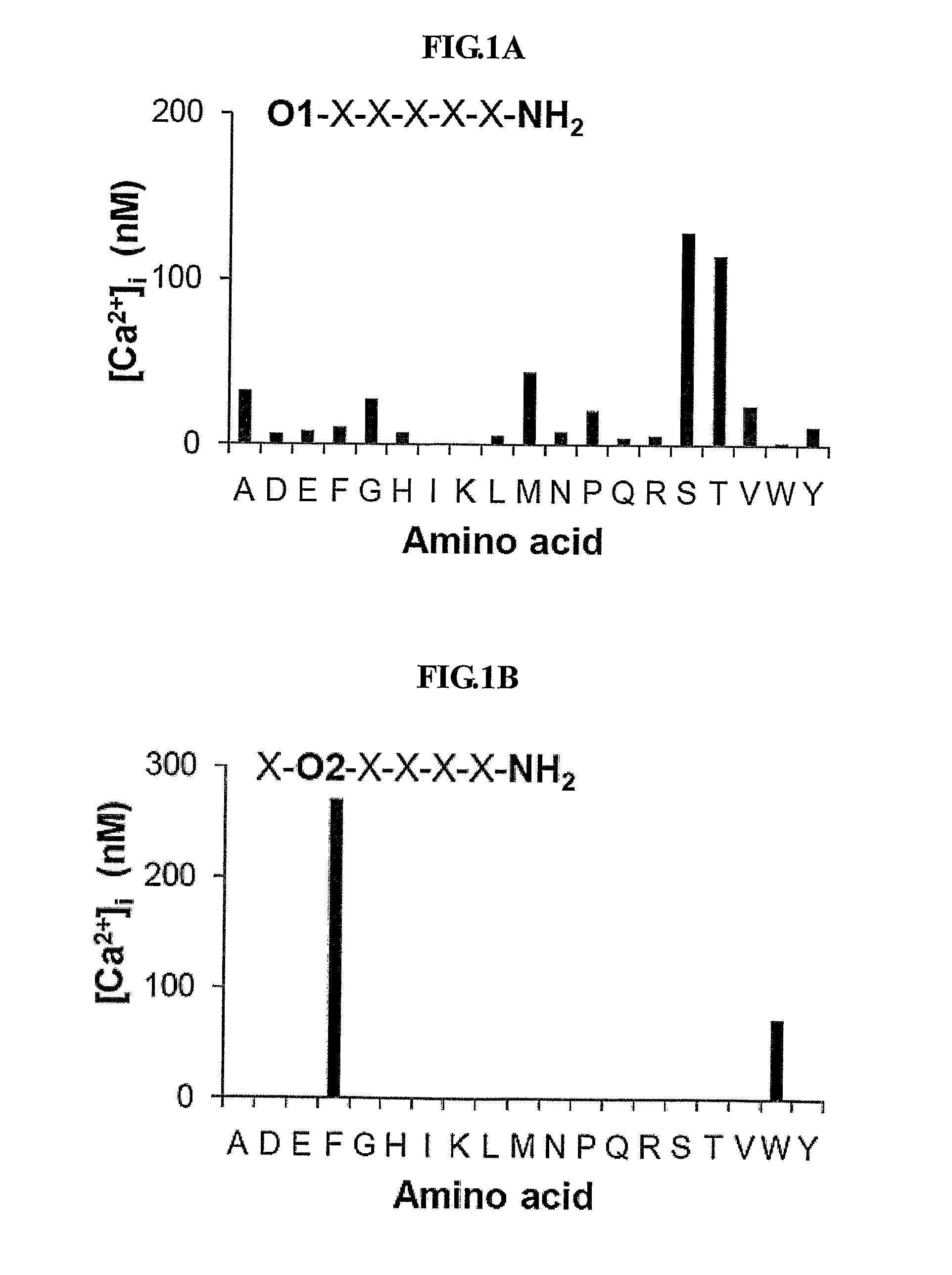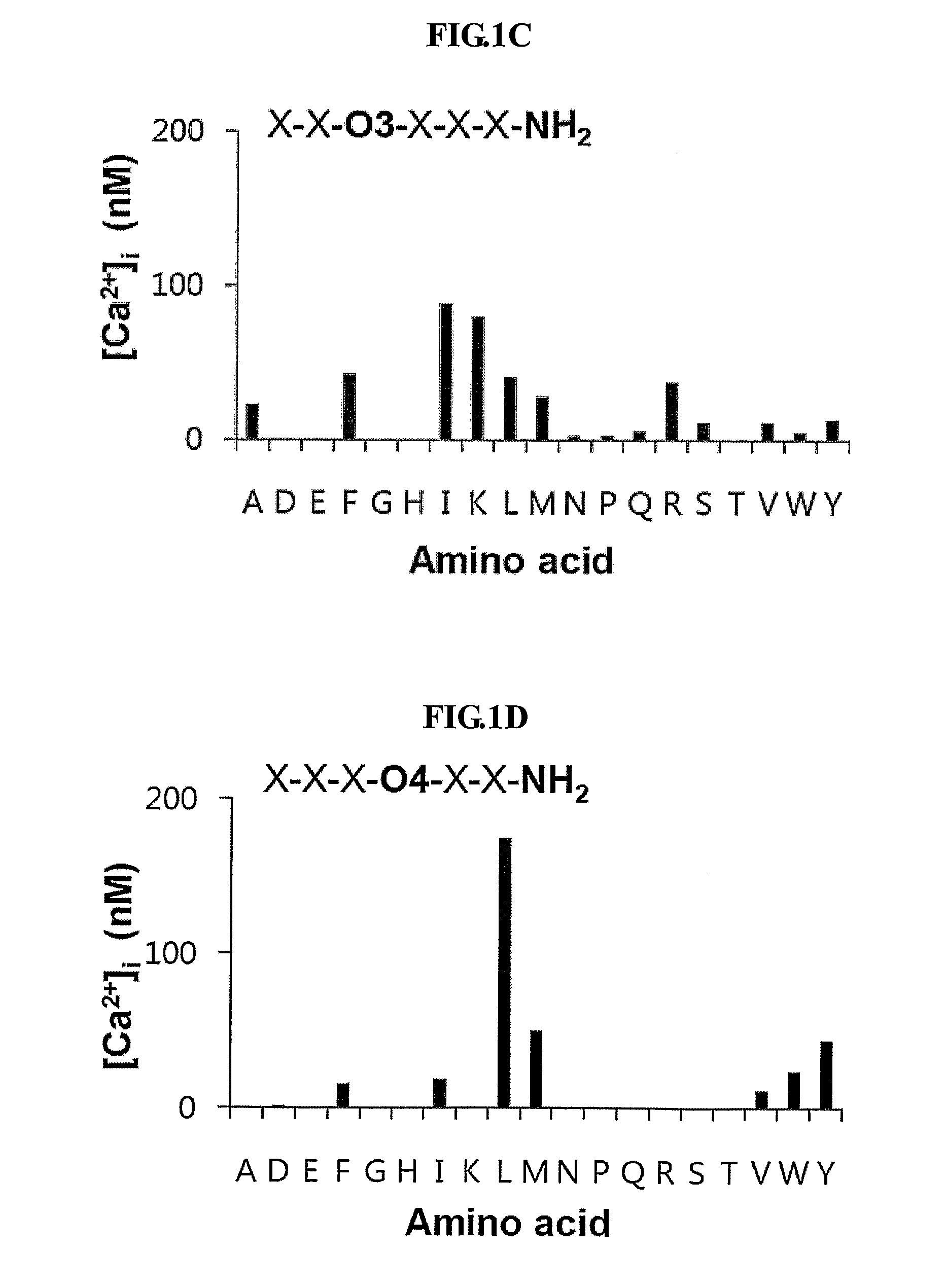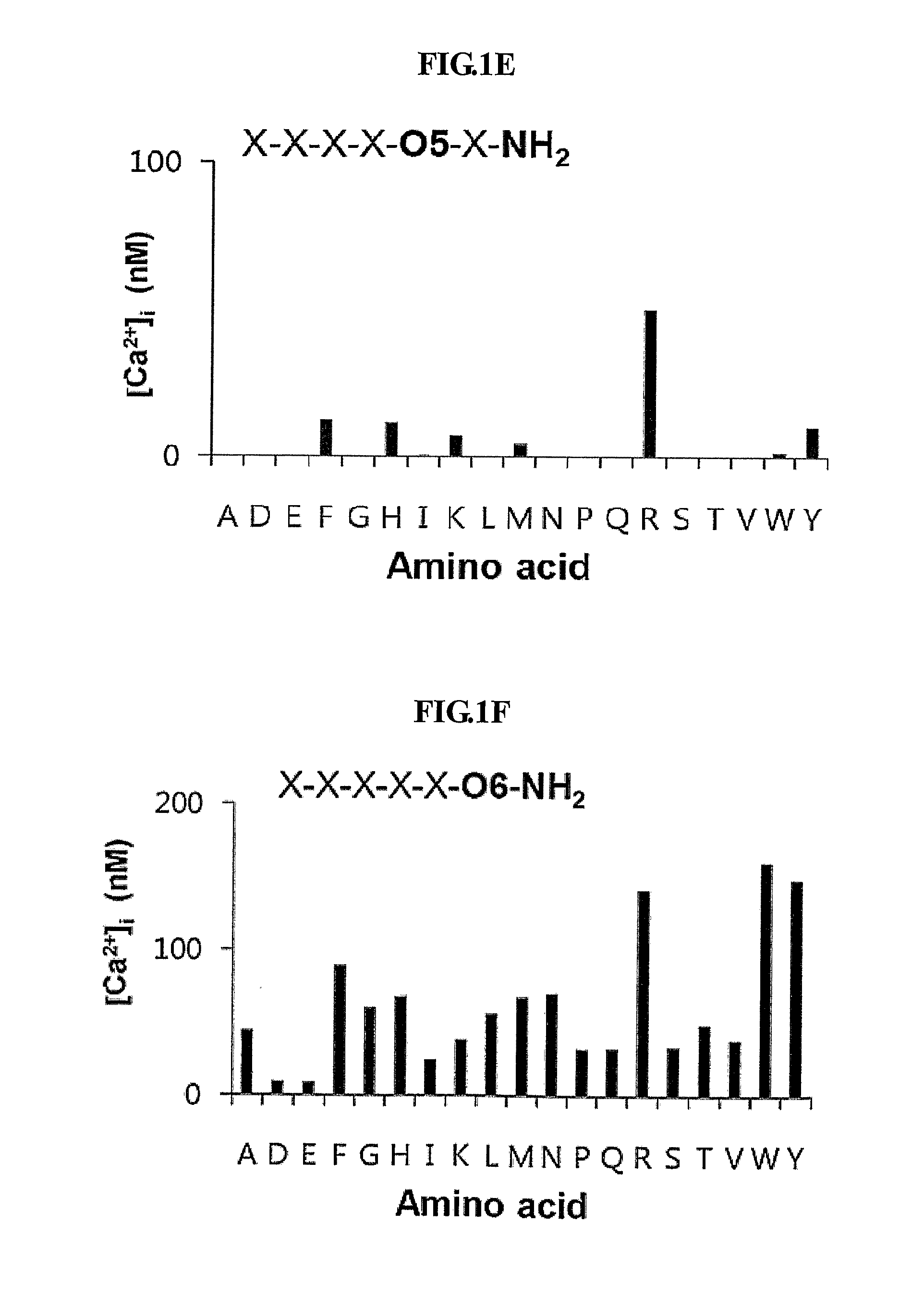Angiogenic peptide
a technology of peptides and peptides, which is applied in the field of angiogenic peptides, can solve problems such as severe problems in blood vessels
- Summary
- Abstract
- Description
- Claims
- Application Information
AI Technical Summary
Benefits of technology
Problems solved by technology
Method used
Image
Examples
example 1
Materials and Methods for FPRL1 Antagonist Peptide Characterization
1.1. Materials
[0070]Fura-2 pentaacetoxymethylester (Fura-2-AM) and 1,2-bis(2-aminophenoxy)ethane-N,N,N′,N′-tetraacetoxymethyl ester (BAPTA-AM) were purchased from Molecular Probes (Eugene, Oreg.). Pertussis toxin (PTX), U73122 and U73433 were from Calbiochem (San Diego, Calif.). Matrigel was from Becton Dickinson (Bedford, Mass.). Recombinant human VEGF and anti-VEGF neutralizing antibody were from R&D systems (Minneapolis, Minn.). Peptides were synthesized by Peptron Inc. (Korea). PS—SPCLs were prepared in the Peptide Library Support Facility at Pohang University of Science and Technology (Korea), as previously described (S. H. Baek, et al, J Biol Chem 271 (1996), pp. 8170-8175; R. A. Houghten, et al., Nature 354 (1991), pp. 84-86).
1.2. Cell Culture
[0071]MS-1 cells and B 16F1 murine melanoma cells were grown in DMEM containing 10% FBS at 37° C. in a humidified incubator supplied with 95% air and 5% CO2. HUVECs were ...
example 2
2.1. Identification of Peptides that Induce [Ca2+]i Increase in MS-1 Cells
[0080]To identify peptides that stimulate intracellular calcium mobilization in murine endothelial cells (MS-1 cells), the inventors screened 114 pools of C-terminally amidated synthetic hexapeptides. The results of the initial screening of the peptide libraries in MS-1 cells are shown in FIG. 1A to 1F.
[0081]FIG. 1A to 1F show the initial screening of the PS—SPCLs for peptides increasing intracellular calcium in MS-1 cells. Each panel indicates the results obtained with the peptide pools with known amino acids at each of the six positions of the hexapeptides. The six positions were individually defined (e.g., O1, O2) by one of the 19 L-amino acids. The remaining five positions consist of mixtures (X) of the 19 L-amino acids (excluding cystein). The library consists of 114 peptide pools; the PS—SPCL in total is made up of 47,045,881 different peptides. [Ca2+]i increase was measured fluorometrically using Fura-2...
example 3
Promotion of the Healing of Wound in an Animal Model
[0107]Wound healing experiments were performed with Sprague-Dawley (6 week-old, male, body weight 140˜160 gram), the animals were randomly divided into three groups. Under gerolan anesthesia, the back was shaved and the skin was sterilized with 70% ethanol. Full-thickness wounds were created on the skin of the backs using 8-mm skin biopsy punches. Wound site covered with Tegaderm. The present inventors were administered topically each groups with Control (HBSS), SFKLRY 10 uM and fysrlk 10 uM, once daily, for a period of 14 days. After 14 days, the rats were sacrificed and then the wound tissues were removed. These samples were then separately fixed in 4% formaldehyde, dehydrated through graded alcohol series, cleared in xylene and embedded in paraffin wax. Serial sections of 4 μm were cut, and stained with hematoxylin and eosin (H&E).
[0108]Based on the positive effect of SFKLRY—NH2 (SEQ ID NO: 2) on HUVEC migration in an in vitro w...
PUM
 Login to View More
Login to View More Abstract
Description
Claims
Application Information
 Login to View More
Login to View More - R&D
- Intellectual Property
- Life Sciences
- Materials
- Tech Scout
- Unparalleled Data Quality
- Higher Quality Content
- 60% Fewer Hallucinations
Browse by: Latest US Patents, China's latest patents, Technical Efficacy Thesaurus, Application Domain, Technology Topic, Popular Technical Reports.
© 2025 PatSnap. All rights reserved.Legal|Privacy policy|Modern Slavery Act Transparency Statement|Sitemap|About US| Contact US: help@patsnap.com



